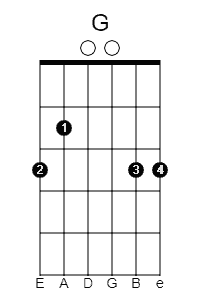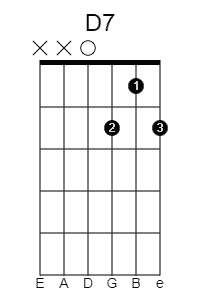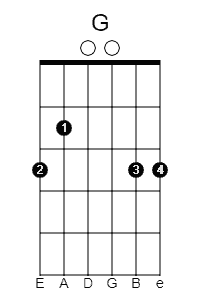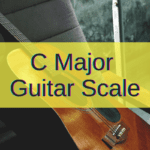Let’s face a fact of life: some songs just sound “happy”. I mean, regardless of the lyrics and the arrangement, some songs just have an uplifting effect on the listener.
If, for a minute you think that’s just the magic of music or an unintended effect; then you’re way off track. On the opposite, it’s a well-defined strategy, a definite arrangement, and, of course, a specific chord progression that gives these songs their spirit and effect.
Yes, I know what you’re thinking “Who’s the Highlander I have to decapitate to get those magic powers?” Well, put away your sword and bring out that six-stringer because we’re going deep into this magical mystery to sort it out once and for all.
Are you ready to gain this happy musical superpower?
Well, read on, because this is it!
Can Chords Convey Emotions?
This is one of those questions that have a before & after effect on musicians. Indeed, according to a recent study, harmony, melody, rhythm, and other elements in music can have an emotional impact on listeners.
Therefore, whenever we think of a song we love or that has an impact on us, it’s better to think of it as an amalgamation of storytelling efforts coming from the melody, the lyrics, but also the chords that support all of that. Moreover, even the chosen tempo can change the vibe of a song.
For example, it’s not the same to play a happy chord progression at 80 bpm as doing it at 120 bpm. In the second case, it will drastically add to the overall happy feeling of the tune while in the first case, it will transform it into something closer to a lullaby or a dark anthem rather than an uplifting tune.
But how do we know what kind of emotion each chord conveys?
Well, that’s exactly what’s coming up, so read on.
The Old Tale of The Happy, the Sad, and the Urgent
This is something that has been studied extensively and used for decades to construct some of the biggest singalongs and radio mega-hits in the history of modern music. But what do we talk about when we talk about the old tale of the happy, the sad, and the urgent?
Well, we’re talking about the role that chords perform when they are grouped within a scale. Moreover, we’re talking about the effects the precise combination of notes can generate.
So, let’s go through the main characters of this story starting with The Happy.
The Happy
Let me say this at once and blow the scoop for you: Major chords sound happy. Yes, major chords are the perfect color to paint an awesome, round, big, meaningful chorus with. They are almighty chords that can give the listener a sense of “this is home” which translates into a formula for happiness.
So, the major chords on any scale or key represent the happy element.
As you’ll see further on, many of our proposed chord progressions start with a major chord and are full of them.
Finally, as you might know, major chords are triads, therefore, if you come across a major seventh chord, it will carry on that major happiness and add a little mystery to its flavor.
- In a major key, major degrees are I, IV, and V.
- In a minor key, major degrees are III, VI, and VII.
The Sad
Let me begin by saying that minor chords are the sad members of the chords’ community. Yes, whenever you play a minor chord, you’ll begin to feel a little blue spirit takes over the composition or song. This is because these chords are representatives of the other element that keeps everything in balance between major and minor chords.
Because of this characteristic, entire musical styles were created around the idea of huge, major-chord-fueled choruses and smaller, sadder, slightly darker verses made with minor chords. I can name two off the top of my head: Grunge and Nü Metal.
Again, since these chords are also triads, you can always add the seventh as the fourth note and transform them into a sad and mysterious chord dressed as a psycho clown chasing children around your song.
Jokes aside, adding the seventh to a minor chord gives you an amazing texture.
- In a major key, minor degrees are ii, iii, and vi.
- In a minor key, minor degrees are i, iv, and v.
PRO TIP: Whenever you come across scale degrees in capital letters, that’s major chords. When they are in lowercase, they are minor chords.
The Urgent
We’re not going to talk about major or minor chords here but about something completely different: dominant chords.
What is a dominant chord? Well, it’s the chord that occupies the fifth degree of any scale.
But wait, why is the dominant chord urgent? Well, the answer to that question is that each of the degrees of a scale plays a definite role. The role that the fifth chord plays is that of a chord that makes you want to go back to the root or I chord.
Moreover, if you play a dominant chord by adding the seventh note of the scale to it, you’ll get a dominant, urgent chord on steroids.
Let’s do a small exercise so you can properly grasp the true powers of the dominant chord.
Play the following simple sequence of I – V chords: D – G and then turn it into D7 – G.




So, you have the happy, the sad, and the urgent to tell your story; do you want to move on to the most famous, happiest chord progression of all time?
Let’s do this!
Introducing the Happiest Chord Progression of All Time: I – IV – V
I – IV – V or simply 1 – 4 – 5, is the happiest, most famous chord progression in modern Western music. I know this sounds crazy but let me tell you that it makes perfect sense why this chord progression works the way it does.
Let’s break it down:
The First Degree
The chord progression starts with the first degree. In a major key, this degree is always a major chord. Thus, it makes a strong statement right at the beginning of the progression with the root chord.
In other words, the progression starts with an uplifting sensation that’s derived straight from this chord, regardless of the key you’ve chosen for your progression (as long as it’s major).
The Three Major Degrees Together
If you look carefully above, you’ll notice that the major chords in a major scale are I – IV – V. This means that the chord progression will be formed entirely with major chords since you’ll be moving only through the major chords of the scale. This creates a loop of the uplifting, happy, fulfilling, round, and powerful tone of the major chords that dye the entire composition.
For example, if we want to create a 1 – 4 – 5 progression in the quintessential C major scale, we have to talk about C, F, and G. They’re all major chords that sound big, round, and full. Try it on your guitar, and you’ll see what I’m talking about.
The Dominant and the Root Together
Your choice of 1 – 4 – 5 chords includes the root chord and the dominant chord of the same scale. Plus, in this case, they’re both major chords. This means that the major chord loop we talked about above is even stronger because the V degree begs you to go back to the I degree. Therefore, you’re just following the natural path of the chords moving from root (I) to sub-dominant (IV) to dominant (V) and then back to the root (I).
Go get your guitar and try playing C – F – G in a loop and you’ll witness the unleashed power of this chord progression. Furthermore, if you want to spice up your game, you can transform that dominant chord into a dominant seventh chord by adding the flat seventh to the major triad and stepping into some truly urgent territory.
15 Happy Chord Progressions
- I – vi – IV – V
- i – VI – III – VII
- I – III – IV
- i – IV – VI – v
- I – V – vi – iii – IV – I – IV – V
- I – V – vi – IV
- I – IV – V
- i – IV
- I – V – IV
- I – I7 – I – biii – IV – IV7 – IV
- vi – bVII
- I – I – IV – V
- I – IV – I – V
- vi – ii – V – I
- IV – I – V – vi
The Bottom End
A happy chord progression is the perfect way to start writing a happy, uplifting tune. Once the progression sounds like an upbeat journey, you can add to that some minor chords for more flavor on the verses, great lyrics, and a marching rhythm section, and… world beware because the new party anthem is in the making right here!
Happy (happy) playing!

Hello there, my name is Ramiro and I’ve been playing guitar for almost 20 years. I’m obsessed with everything gear-related and I thought it might be worth sharing it. From guitars, pedals, amps, and synths to studio gear and production tips, I hope you find what I post here useful, and I’ll try my best to keep it entertaining also.





